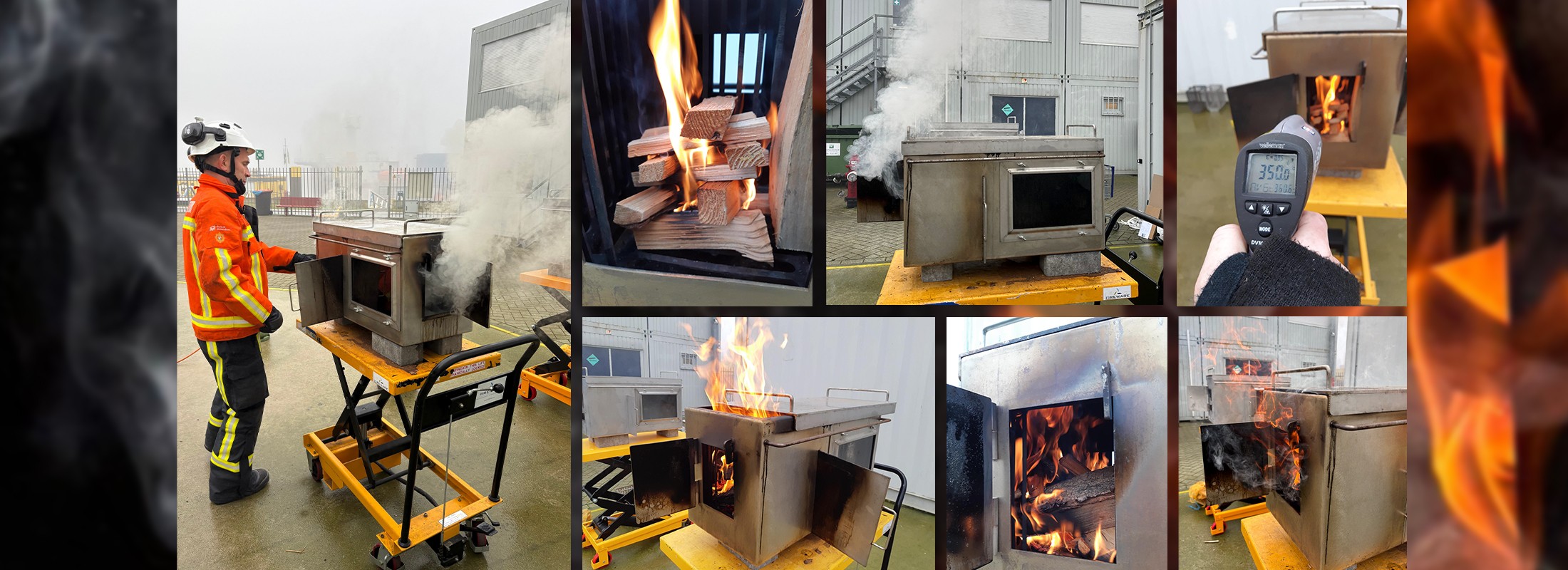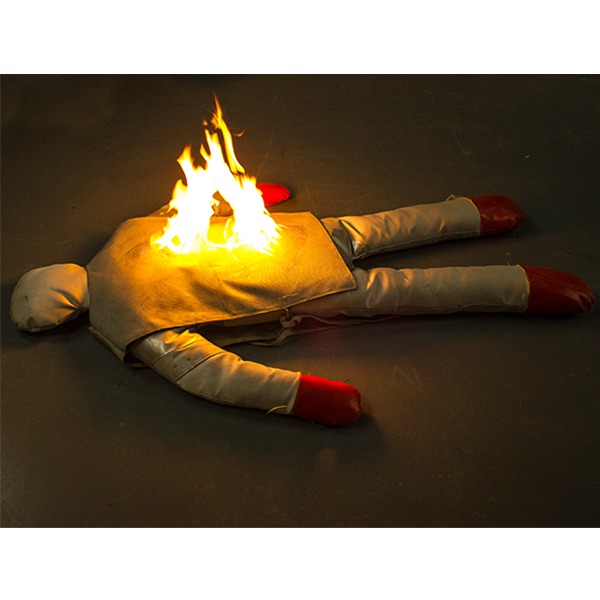In February, we told you all about training smoke. In March, we’re diving into real fire! Simulated fire is ideal for training in locations where real fire is not an option, offering safe, controlled training scenarios. But training a professional in firefighting without ever experiencing real fire? That’s not possible. That’s why there are solutions that incorporate real fire, both for Workplce First Aid and Fire Safety and firefighter training. We’d love to tell you more!
Workplace First Aid and Fire Safety Training
Fire Extinguisher Trainers
For practicing procedures related to extinguishing a small fire, real fire is not immediately necessary. A Workplace First Aid and Fire Safety learns to raise the alarm, evacuate, perform safe door procedures, and assess a fire hazard. However, ultimately, facing real fire is essential—the threat and heat are integral to the training. This is where a fire trainer comes in.
Our gas-powered fire trainers create controlled real fire, with the trainer having full control over the fire source. We offer several options, each with specific benefits:
- Hybrid Fire Extinguisher Trainer: Ignition via a lighting lance. The trainer decides whether the fire extinguishes during an attempt. This allows for the simulation of both solid material and liquid fires. Since the Hybrid has no electronic components, powder extinguishing is also possible. This makes the Hybrid ideal for training on both solid and liquid fires.
- FireWare Solid Fire Extinguisher Trainer: Easily simulate a solid fuel fire. With the optional ceramic wood blocks, you can create the look of a real fire pit. But gas-powered, fully controllable, and safe.
- Vesta Fire Extinguisher Trainer: Electronic ignition with remote control. Thanks to its built-in battery, it is quickly deployable. A Vesta supports two simultaneous fire sources by connecting add-ons to the auxiliary output. Ideal for more complex scenarios.
- Vesta add-ons: The Vesta offers a wide range of add-ons. These easy-to-place attachments allow training for very specific scenarios. Place a computer, microwave, deep fryer, or electric motor on the Vesta to expose trainees to realistic workplace hazards. Additional add-ons can be connected to the auxiliary output, such as a burning gas cylinder or a leaking gas pipe. Larger add-ons, like a washer-dryer combo or gas stove, allow for an integrated fire spread scenario—for example, from a stovetop to an extractor hood. With these add-ons, you can easily create complex scenarios. Think of a burning gas cylinder next to a burning electric motor—where do you prioritize, and how do you handle it?
Small extinguishers
Workplace First Aid and Fire Safety training revolves around small extinguishing devices. The Neptune system provides a reusable solution: refillable training fire extinguishers and a Filling Unit. By filling extinguishers with a mix of water, air, and training foam, you simulate a foam extinguisher. Add a CO₂ canister and remove the foam, and you have a CO₂ extinguisher simulation. This saves costs and is more sustainable. This system is ideal for companies where emergency responders regularly train with different types of extinguishers, such as offices, schools, and production facilities.
Fire training
Hybrid staging
Combining simulated fire with real fire? That's what we call hybrid staging! The goal: to make trainees really believe in the situation. Excitement and adrenaline are crucial for a realistic learning experience. Real fire triggers the right response and makes simulated smoke and flames more convincing, even for experienced firefighters.
With a gas-fired extinguisher trainer such as the Vesta, the exercise remains controllable. For example:
- Place a Vesta under the hood of a scrap car and place it against a building. The car is burning, and the fire has spread to the building. Inside, simulated fire is used, but the firefighters encounter real fire first. That immediately changes their mindset.
- In a large (industrial) fire: place extinguisher trainers on the roof. The rest of the building contains simulated fire, but on approach, firefighters see real flames coming out of the roof. This influences their approach and response.
- Simulate a gas leak where the leak is burning with a fire extinguisher, while the rest of the building is filled with smoke and simulated fire. This forces firefighters to account for an explosive situation.
Understanding Fire Development
For firefighters, especially new ones, understanding fire development is essential. Recognizing RSTV signals and the risks of hot smoke can save lives. A valuable tool is the Mini Fire Behaviour Trainer. A metal-scale model that simulates fire behavior:
- A fire source develops in the combustion chamber using kindling wood.
- In the pyrolysis chamber, pyrolysis gases become visible.
- The full fire curve is simulated, including flashovers, backdrafts, and smoke explosions.
- Extinguishing techniques and smoke gas cooling can be demonstrated using a spray bottle and an IR thermometer.
This trainer is particularly useful for training new firefighters, where understanding fire progression is essential.


Victims in training
In both Workplace First Aid and Fire Safety and firefighter training include scenarios with victims near a fire source or even burning victims.
- The FireWare fire training manikin Silver is made of heat-resistant material. When coated with fire paste, it allows training in extinguishing a burning person. This is confronting but essential.
- For rescue exercises, the Ruth Lee Firehouse manikin offers a robust, heat-resistant solution. This enables realistic rescue operations in high-temperature environments without risk to real victims.




Fire Gel: Versatile in Use
Low Smoke Fire Gel can be used to safely ignite training dummies or surfaces. Examples include:
- Simulation of a puddle fire on the floor.
- A fire on a laboratory table.
- Applications to hazardous materials.
- A realistic drum fire simulation, such as in an industrial setting where burning drums or leaks are simulated.
Important: Safety first. Fire gel should only be used on fireproof surfaces and in controlled environments.
In conclusion
For both Workplace First Aid and Fire Safety and firefighter training, there are countless ways to safely and effectively incorporate real fire.
Keep an eye on our socials in March 2025 for more information on specific solutions!







